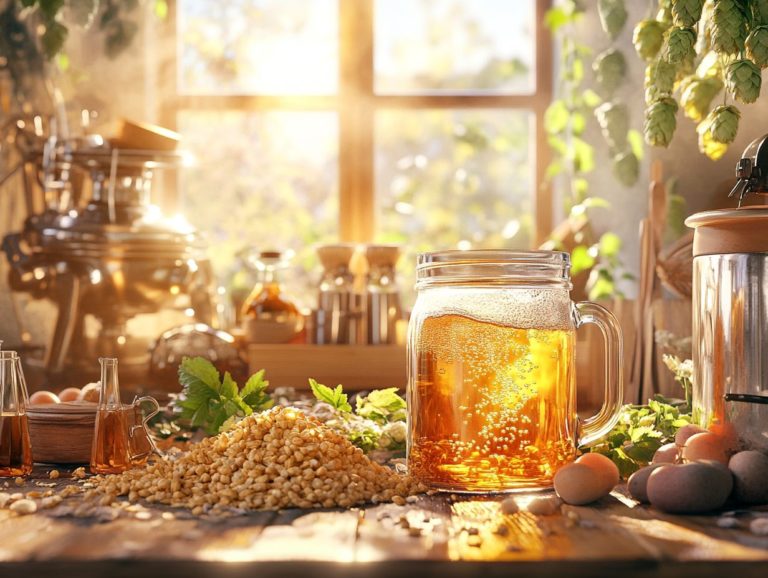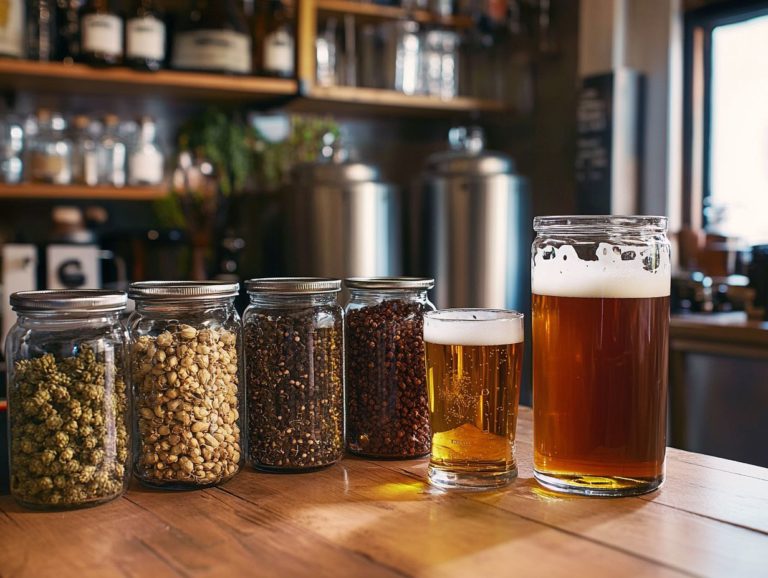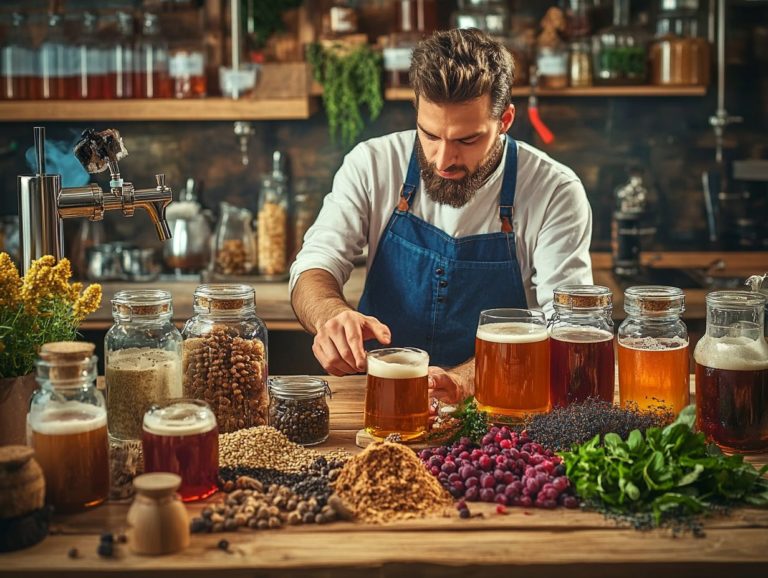How to Adjust Your Recipe with Additives
Contents
- Introduction
- Key Takeaways:
- What Are The Different Types Of Additives?
- 3. Color Additives
- 4. Texture Additives
- How To Choose The Right Additives For Your Recipe?
- How To Use Additives In Your Recipe?
- What Are Some Common Additives Used In Recipes?
- Enhancing Your Baking with Additives
- What Are Some Tips For Adjusting Your Recipe With Additives?
- Frequently Asked Questions
- What are additives and why should I consider adjusting my recipe with them?
- What are some common additives used in recipes?
- How do I know which additives to use in my recipe?
- Can I use too much of an additive in my recipe?
- What are some alternatives to common additives and baking techniques?
- Are there any health considerations when using additives in baking recipes?
Introduction
Additives are essential in the culinary world, turning your everyday recipes into extraordinary creations. They enhance flavors, preserve freshness, and elevate your dishes in ways you might not have imagined.
This article delves into the different types of additives such as flavorings, preservatives, colorings, and texture enhancers and provides you with practical tips on selecting and using them effectively.
Whether you re just starting out in the kitchen or you re a seasoned chef, grasping the role of additives will empower you to tweak your recipes and consistently achieve mouthwatering results.
Key Takeaways:

- Choose the right type of additive for your recipe, such as flavoring, preservative, color, or texture additives.
- Follow recommended amounts, incorporate gradually, and consider cooking methods when using additives in your recipe.
- Common additives used in recipes include baking powder, cornstarch, vinegar, and salt.
What Are The Different Types Of Additives?
Additives are essential for elevating the flavor, texture, and appearance of a wide array of recipes, particularly in the baking techniques you’ll master at the BwB Home Baking Academy. By familiarizing yourself with the various types of additives, you can significantly enhance your baking prowess and craft delightful treats for family gatherings or special occasions while skillfully accommodating dietary restrictions like being gluten-free or vegan.
This guide will delve into the four primary types of additives: flavoring, preservative, color, and texture additives, each playing an important role in making your recipes better.
1. Flavoring Additives
Flavoring additives are truly essential for elevating the taste profile of your baked goods. They are available in an array of forms such as extracts, spices, and natural flavorings.
These ingredients not only enhance the overall flavor but also introduce unique nuances that cater to your specific preferences. For instance, when you re whipping up popular recipes like chocolate chip cookies, adding a splash of almond extract can lend a delightful nuttiness that beautifully complements the sweet chocolate.
Incorporating vanilla extract is a timeless choice, bestowing a warm, comforting undertone that many adore. Adjusting the quantity of these flavoring agents allows you to customize the taste whether you lean towards a robust almond flavor or prefer a subtle hint of cinnamon for that extra spicy kick.
Try experimenting with different flavors to discover exciting new combinations! Embracing experimentation can transform your baking experience into a truly personalized journey, allowing you to create treats that are uniquely yours.
2. Preservative Additives
Preservative additives play a crucial role in extending the shelf life of baked goods, ensuring they remain safe to consume while also preserving their quality and flavor.
When you understand how these additives work, you can make informed choices, particularly when it comes to healthier eating habits. Many individuals share concerns about the potential health impacts of synthetic ingredients, which drives a quest for more natural alternatives.
Options like vinegar, lemon juice, and certain essential oils can effectively preserve your favorite treats without compromising your dietary preferences. By exploring these alternatives, you can indulge in freshly baked goods that tantalize your taste buds and align perfectly with your health goals and dietary restrictions, whether you re navigating a gluten-free or vegan lifestyle.
Start experimenting with these additives today, and watch your culinary creations come to life!
3. Color Additives
Color additives are important for your baking, serving not just for aesthetic allure but also to convey flavor and enhance the visual appeal of your desserts. A classic example is the stunning red velvet cake.
These additives can come from a variety of sources. Natural options like beet juice, turmeric, and cocoa powder often take the spotlight due to their health benefits and vibrant colors. On the other hand, artificial colorings offer a wide palette of vivid shades, making them a cost-effective choice for crafting visually stunning treats.
Regarding special occasions whether you’re hosting a thoughtful teacher appreciation event or a lively family gathering understanding the nuances of the right type of coloring for your baked goods can significantly elevate your desserts. This ensures that both taste and visual presentation contribute to the celebration s success.
4. Texture Additives
Texture additives are essential for achieving that perfect mouthfeel and consistency in your baked goods. They play a significant role in cookie recipes and other delightful treats.
Ingredients like cornstarch and baking powder transform textural qualities and greatly influence the rising action and overall structure of your final creations. For instance, when you incorporate cornstarch into a cookie recipe, it brings a tender softness that enhances the cookie’s center, while crafting a delightful crisp edge ideal for favorite classics like chocolate chip and sugar cookies.
Baking powder, which helps cakes rise, lifts the airy texture of cakes and muffins to new heights. The difference becomes stark when comparing a dense pound cake to a light, fluffy chiffon cake, illustrating how the right balance of texture additives can take your baking from simply good to truly exceptional.
How To Choose The Right Additives For Your Recipe?
Choosing the right additives for your recipe is essential to ensure your baked goods achieve the perfect flavor, texture, and visual appeal. This is especially important when scaling recipes for special occasions like family gatherings.
When selecting these additives, it s crucial to consider the specific demands of the recipe, such as the desired rise of a cake or the perfect crunchiness of a cookie. Understanding how various ingredients interact can lead to delightful outcomes. For instance, incorporating a natural sweetener can elevate the overall taste without overwhelming it.
If you find yourself adjusting ingredient proportions for larger batches, using a conversion calculator can be a game changer. This will ensure your final product is perfectly balanced and delicious! Practical examples, like opting for gluten-free flour when needed, underscore the importance of adaptability in achieving the desired results.
How To Use Additives In Your Recipe?
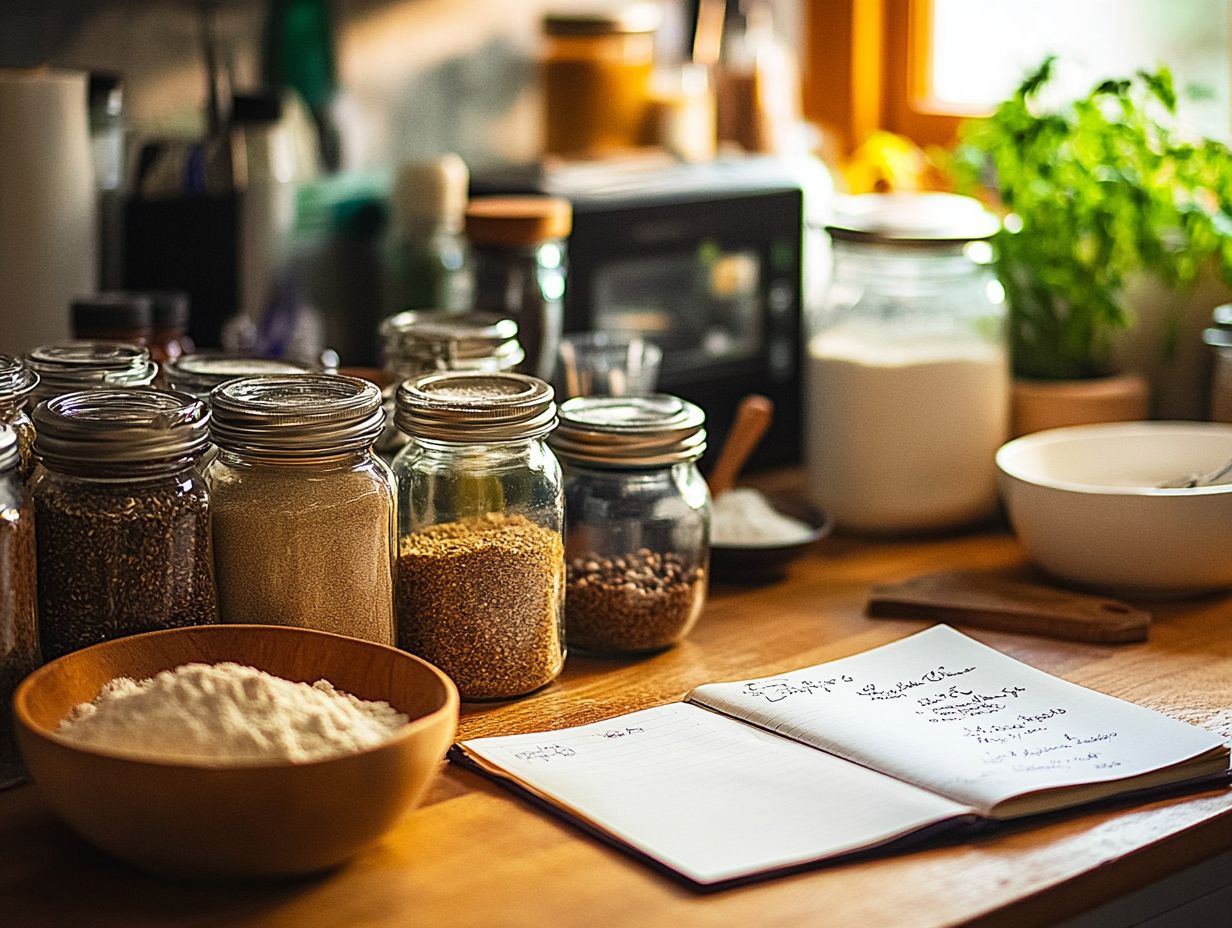
Effectively utilizing additives in your recipe can elevate the overall outcome, whether you’re crafting classic chocolate chip cookies or venturing into innovative flavors in a bespoke bakery creation.
1. Follow The Recommended Amount
Following the recommended amounts of any additive in your baking is crucial for achieving the desired results without compromising your recipe’s integrity. Precision in measuring ingredients like flour, sugar, and baking soda can dramatically influence the texture and flavor of your baked goods.
For instance, in a classic chocolate chip cookie recipe, using too much flour can lead to a dry, crumbly texture, while not enough baking soda may prevent those cookies from rising properly. When whipping up a cake, even a slight deviation in the amount of baking powder can transform a light, airy treat into a dense disappointment.
By adhering to the specified measurements, you not only ensure consistency but also enhance the overall success of your baking endeavors. With the right additives, your baking can reach new heights of flavor and texture!
2. Incorporate Additives Gradually
Incorporating additives gradually into your mixture allows you to maintain better control over the final taste and texture of your baked goods. This method enhances flavor distribution and helps avoid clumps that can lead to uneven results.
For example, when adding flour to a batter, using mixing bowls designed for thorough blending can help you achieve a consistent mix. By introducing flour slowly while mixing, you ll find it easier to monitor the batter s thickness and make adjustments as necessary.
Similarly, when you incorporate baking powder or soda, doing so gradually ensures that these ingredients help baked goods rise effectively. This results in a well-risen cake or fluffy muffins.
This thoughtful approach to mixing contributes to an elevated final product that will impress anyone fortunate enough to taste your creations.
3. Consider The Cooking Method
Different cooking methods significantly impact how additives interact with your ingredients. Understanding the specific baking technique you re using is crucial for achieving optimal results.
The choice of method dictates the final texture, flavor, and appearance of your baked goods. This, in turn, influences how you should incorporate various additives.
For instance, techniques like steaming often require different leavening agents compared to traditional baking. The moisture level affects the performance of these ingredients.
Additionally, deciding between convection and standard baking may require you to adjust the sugar, flour, or fat content to ensure the desired browning and rise. Your knowledge of baking techniques and ingredient proportions becomes crucial here.
By exploring the unique characteristics and requirements of each cooking method, you can choose the most suitable additives to enhance the overall quality of your baked goods.
What Are Some Common Additives Used In Recipes?
You can elevate your baking recipes with common additives like baking powder, cornstarch, vinegar, and salt. Using whole grain flour also contributes to healthier recipes.
Each ingredient serves a distinct purpose. They enhance the overall quality of your baked goods and can be adjusted to meet various dietary needs and restrictions.
1. Baking Powder
Baking powder is an essential leavening agent that creates light and fluffy textures in your baked goods, whether it’s cakes or cookies.
This critical ingredient operates through a blend of acidic and alkaline components. It typically features sodium bicarbonate alongside one or more acid salts, like cream of tartar. When mixed with moisture and heat, it produces carbon dioxide gas, helping your batter rise.
This reaction is vital for achieving the perfect volume and texture across a variety of recipes, from delicate souffl s to hearty bread. Understanding how baking powder works can really boost your baking game.
Whether making a chocolate chip cookie or snickerdoodle cookie, knowing these reactions is key to consistent and delightful results.
2. Cornstarch
Cornstarch is a game-changer in baking. It’s often used to enhance texture, thicken mixtures, and prevent clumping. Its versatility makes it essential in many recipes.
Adding cornstarch introduces a delicate lightness to cakes and cookies. It helps you achieve that coveted melt-in-the-mouth quality every baker dreams of. Its moisture-absorbing capabilities stabilize whipped creams and custards, ensuring a smooth consistency that holds up beautifully.
Consider a pancake recipe infused with cornstarch those fluffy results are hard to resist! In puddings, it enhances creaminess without adding extra fats. Plus, in many gluten-free recipes, it acts as a vital binder, mimicking the structure gluten provides in traditional baking.
With all these remarkable qualities, it s no surprise that cornstarch is a staple in countless kitchens.
Enhancing Your Baking with Additives
3. Vinegar
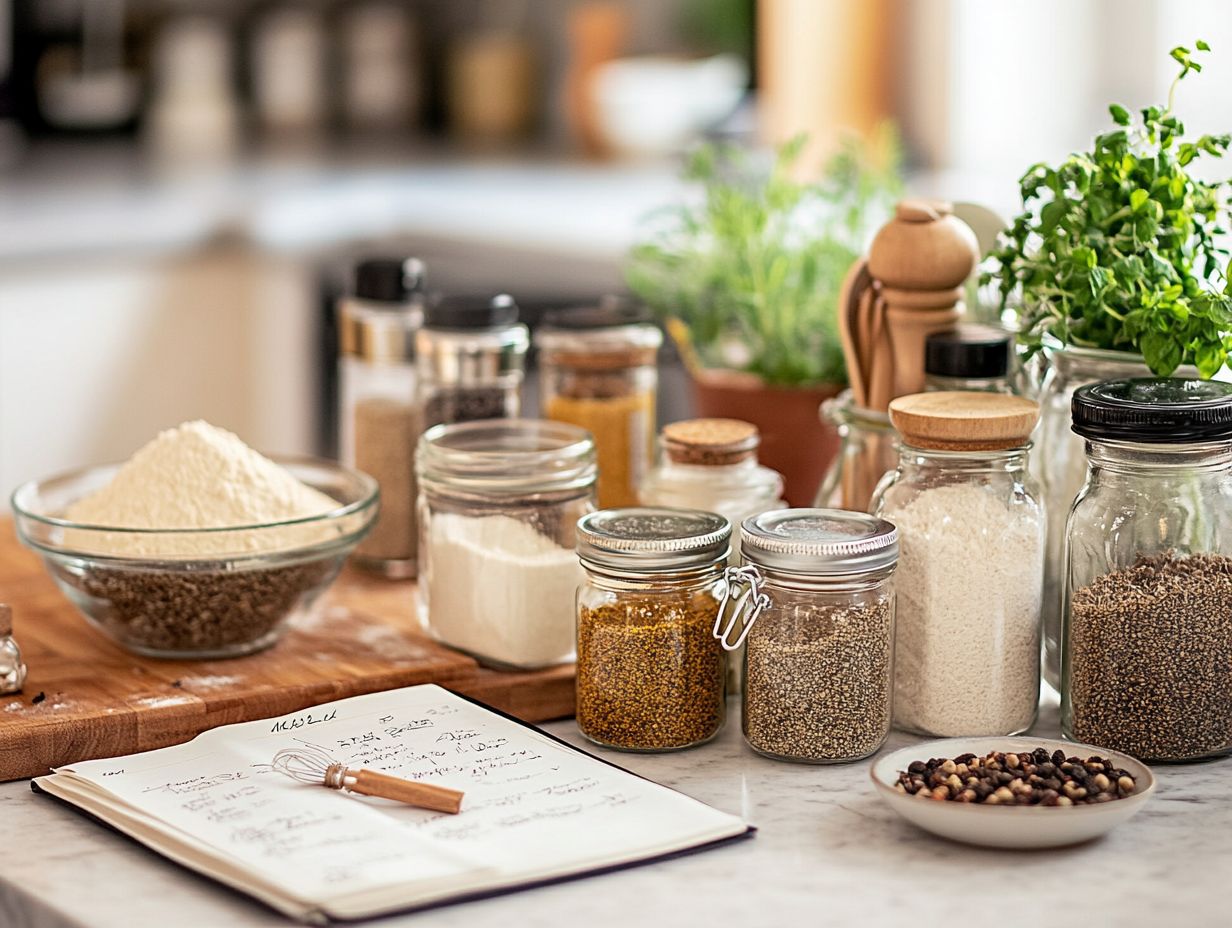
Vinegar is a secret weapon in your baking arsenal! It enhances flavors, activates baking soda, and improves the texture of your baked goods. For example, adding a splash of apple cider vinegar can make a notable difference in your red velvet cake.
This versatile ingredient comes in various types, each with unique properties that can elevate your recipes to new heights. Apple cider vinegar offers a mild and fruity zest, making it an ideal choice for cakes and muffins. On the other hand, white vinegar provides a clean taste, perfect for specific breads that need a subtle background note.
Don t overlook balsamic vinegar either! It can lend an unexpectedly rich depth to chocolate desserts. This creates a delightful contrast that surprises and delights.
By understanding these distinctions, you can achieve not only the perfect rise in your baked creations but also infuse them with intriguing layers of flavor. Everyone will be asking for seconds!
4. Salt
Salt is not just a flavor enhancer; it plays a vital role in baking. It controls fermentation and fortifies gluten in your baking endeavors. Its significance cannot be overstated, as it deftly balances the sweetness of other ingredients.
This results in a more harmonious flavor profile that elevates your baking. Each type of salt be it kosher, sea, or table salt brings its unique attributes to your recipes.
Coarse salts can impart a delightful crunch, while finer salts dissolve effortlessly, ensuring even distribution throughout your dough or batter.
Master the art of salt usage today to elevate your baking! This attention to detail enhances not only the taste but also the all-important texture of your baked goods.
This is what allows you to create everything from flawlessly risen bread loaves to light, airy cakes.
What Are Some Tips For Adjusting Your Recipe With Additives?
Adjusting recipes can be essential for scaling recipes or adjusting yield. This is especially true when dealing with small batches or cookie quantities.
When adjusting your recipe with additives, it s essential to adopt a thoughtful approach. This ensures that your baked goods retain their intended flavor and texture while accommodating specific dietary needs or preferences.
1. Use Additives To Enhance Flavor
Using additives to enhance flavor is one of the most effective ways to elevate your baking recipes from ordinary to extraordinary!
By incorporating a variety of ingredients like extracts, zests, and flavored oils, you can create unique combinations that tantalize the taste buds. Why not swap traditional vanilla for almond or hazelnut? You ll be amazed!
Experimenting with spices such as cinnamon, cardamom, or even a hint of chili powder can add depth to your sweet treats. This transforms familiar flavors into exciting new experiences.
Remember, the key lies in balance; the right amount of these additives can significantly enhance your baked goods without overpowering the original flavors. This principle is often emphasized in courses at the BwB Home Baking Academy.
2. Use Additives To Thicken Or Thin Out A Dish
You can use additives strategically to thicken or thin out a dish! This helps you achieve the perfect consistency for your baked creations. Such attention to detail is especially crucial when aiming for ideal textures in recipes like sauces, soups, or batters.
For thickening, consider mixing ingredients such as cornstarch or arrowroot powder with a small amount of cold liquid before adding them to your simmering mixture. This technique ensures smooth incorporation.
If you want to thin out a dish, think about adding broths, stocks, or even milk. This will help you achieve a lighter consistency. Gradually introducing these additives while stirring will help maintain an even texture without clumps, resulting in a more delightful eating experience.
3. Use Additives To Preserve Foods
Using additives strategically can be a game changer for preserving your foods, extending their shelf life while ensuring they stay safe and visually appealing for consumption.
Common preservatives like salt, vinegar, and certain enzymes have long been cherished for their prowess in preventing spoilage and maintaining the integrity of flavors. When you incorporate these preservatives into your recipes, it s essential to keep dietary needs in mind.
For example, if you re adhering to a low-sodium diet, you can easily swap out traditional salt for potassium-based alternatives, achieving a similar preservation effect without sacrificing flavor.
Similarly, if you re dealing with vinegar allergies, consider exploring citrus juices or fermented options that provide both preservation benefits and flavor enhancement, all while respecting your health needs. This fun method makes your dishes exciting and accessible to everyone!
4. Use Additives for Color Enhancement
You can elevate the visual appeal of your dishes with additives that add vibrant colors, making them more enticing at events and gatherings.
Color enhancers are ingredients that add color to food and come in various forms, such as gels, powders, and liquids, each tailored for different baking applications. For instance, gel-based additives are perfect for achieving bright frosting or cake batter without compromising texture, while powdered forms seamlessly blend into dry mixes for cookies or cakes.
At family gatherings, these colorful delights not only please the eye but also inspire joy and conversation among guests. For parties, feel free to experiment with natural colorants like beet juice or turmeric, adding a stunning yet unique touch to your cupcakes or pastries, turning each dessert into a work of art.
Frequently Asked Questions
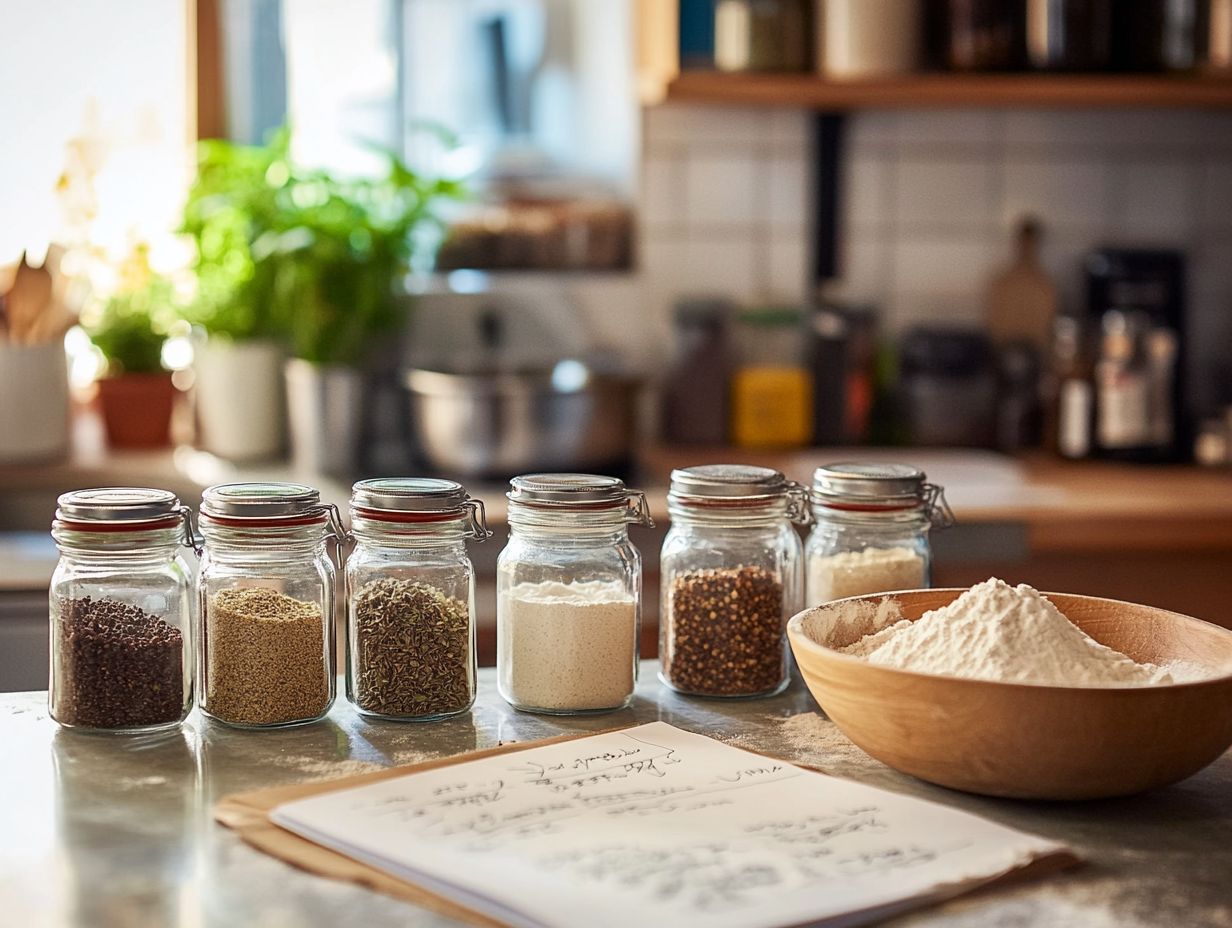
What are additives and why should I consider adjusting my recipe with them?
Additives are ingredients that enhance flavor, texture, and appearance. Adjusting your recipe with additives can improve the taste and overall quality of your dish.
What are some common additives used in recipes?
Common additives include spices, herbs, seasonings, condiments, and extracts. These ingredients can add depth and complexity to your dish.
How do I know which additives to use in my recipe?
Consider the flavor profile of your dish and choose additives that will complement the existing ingredients. You can also look for recipes that use similar ingredients and see what additives they recommend.
Can I use too much of an additive in my recipe?
Yes, it is possible to use too much of an additive, such as almond extract, which can overpower the other flavors in your dish. It’s important to follow the recommended measurements and to taste as you go, especially when using a digital kitchen scale for accurate ingredient proportions.
What are some alternatives to common additives and baking techniques?
If you don’t have a specific additive on hand, you can often substitute with a similar ingredient. For example, if a recipe calls for fresh herbs, you can use dried herbs instead. This is especially useful in cookie recipes where specific ingredients like whole grain flour or different oils such as canola oil and vegetable oil might be substituted based on availability and health choices.
Are there any health considerations when using additives in baking recipes?
Some additives may contain allergens or artificial ingredients, so it’s important to read labels and consider the dietary needs of those you are cooking for. You can also opt for more natural or organic versions of additives, such as using whole grain flour or fat-free milk in baking recipes. Consider recipe conversion and adjusting yield to prepare small batches or scaling recipes appropriately for family gatherings or specific dietary needs.
Now it’s your turn to experiment with additives in your cooking! Share your experiences and let us know your favorite recipes!

